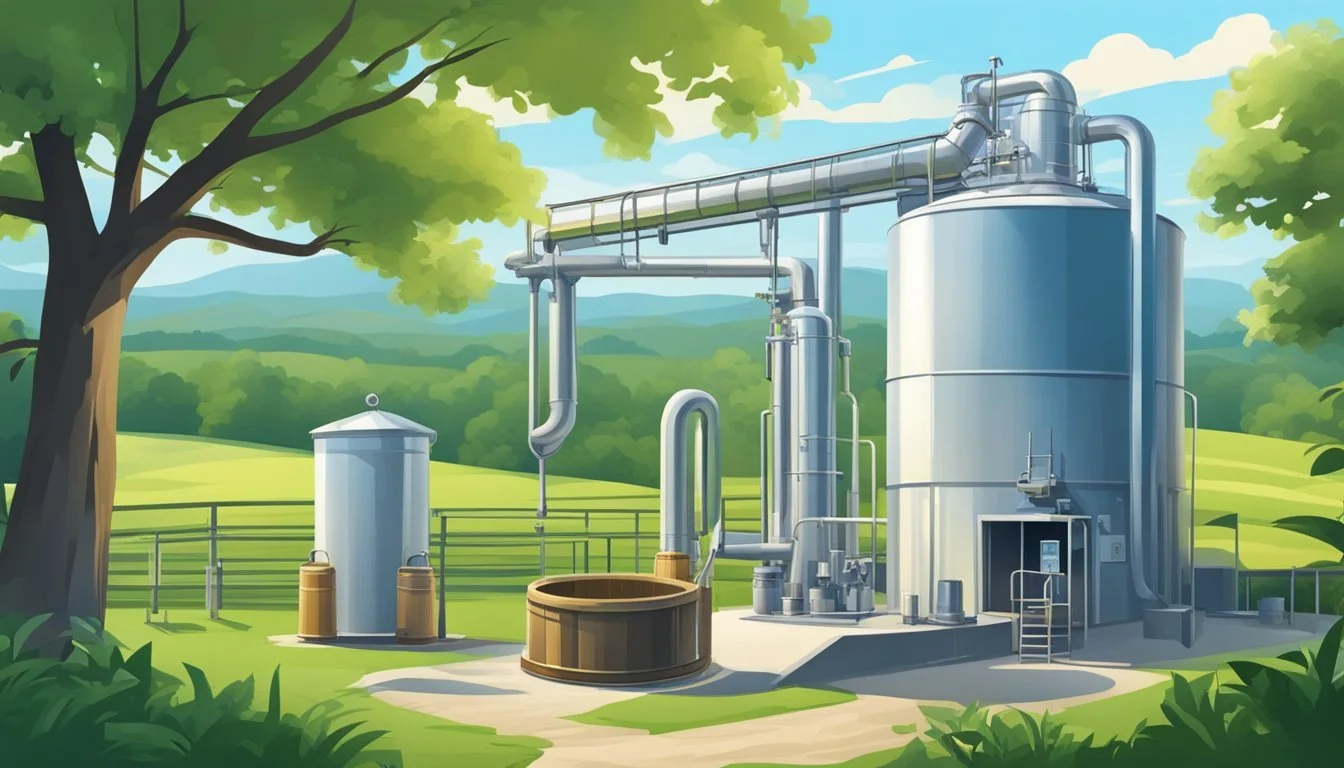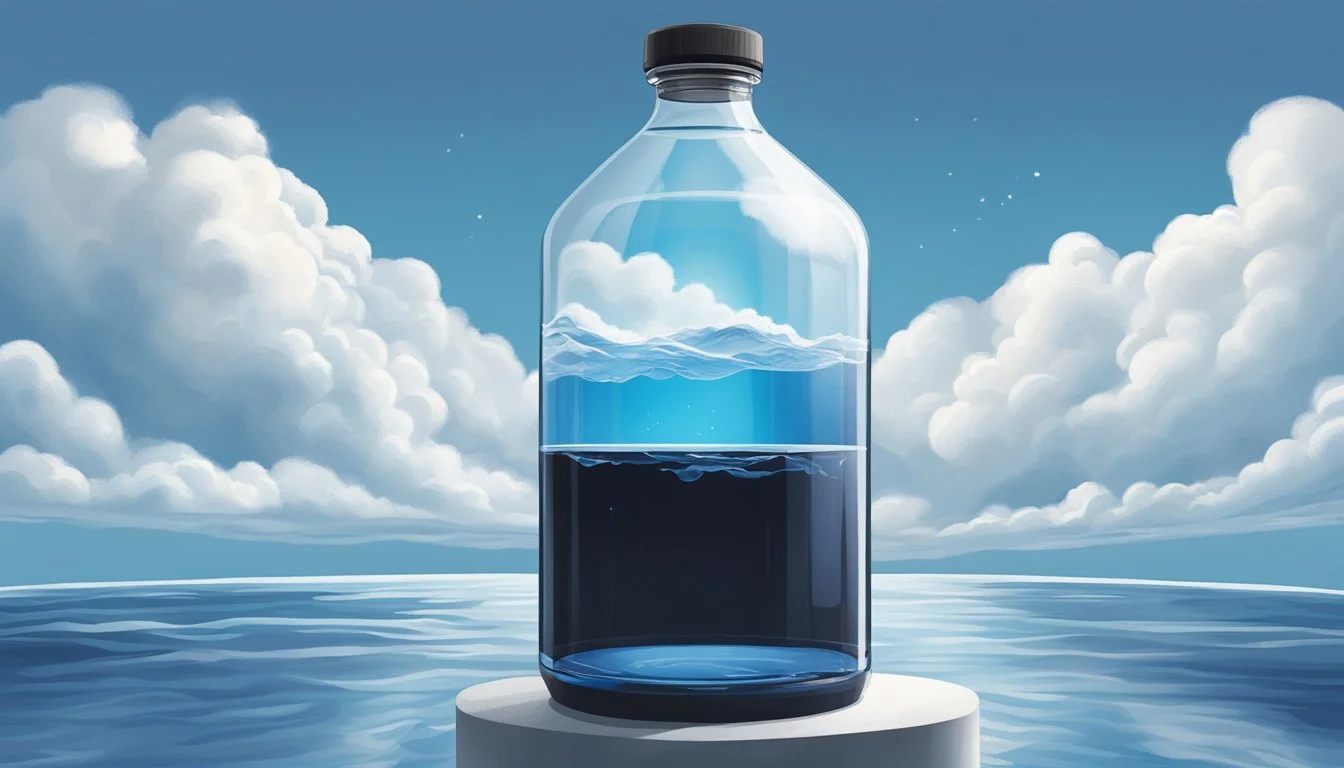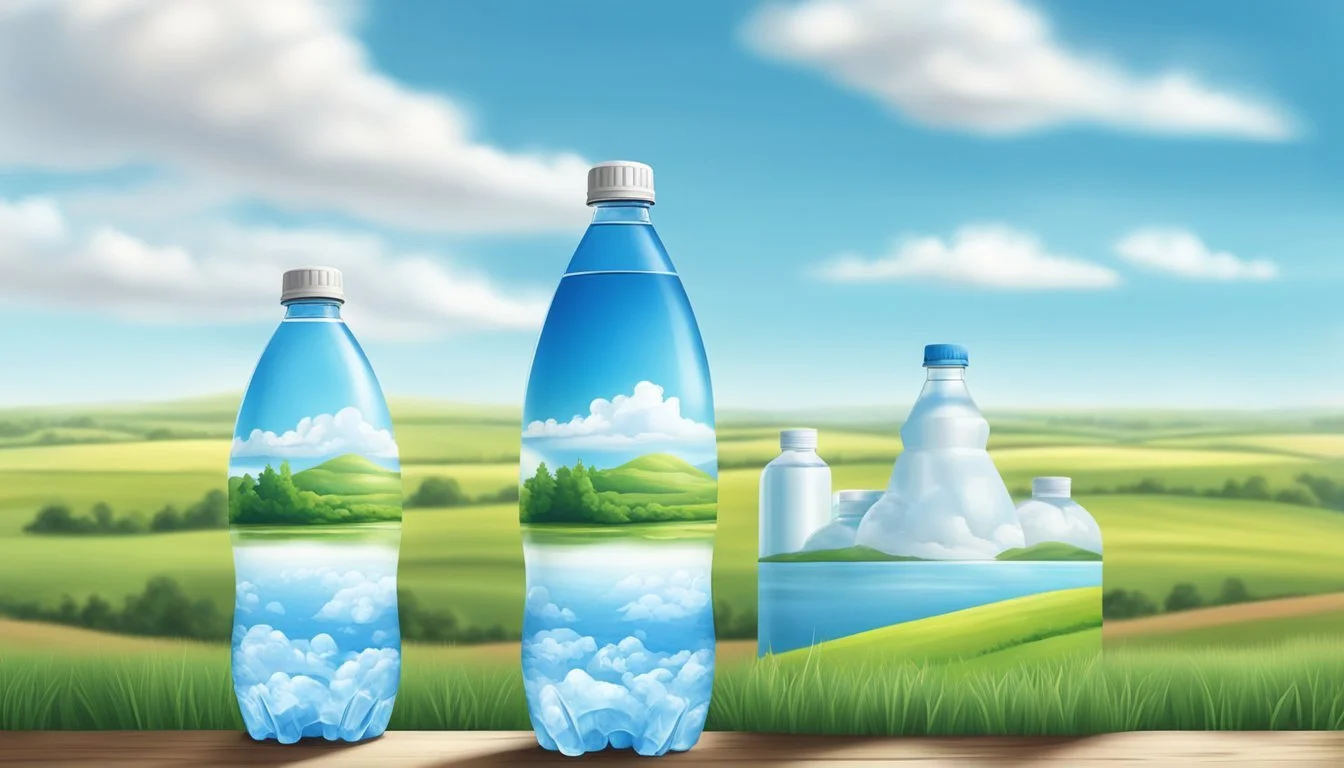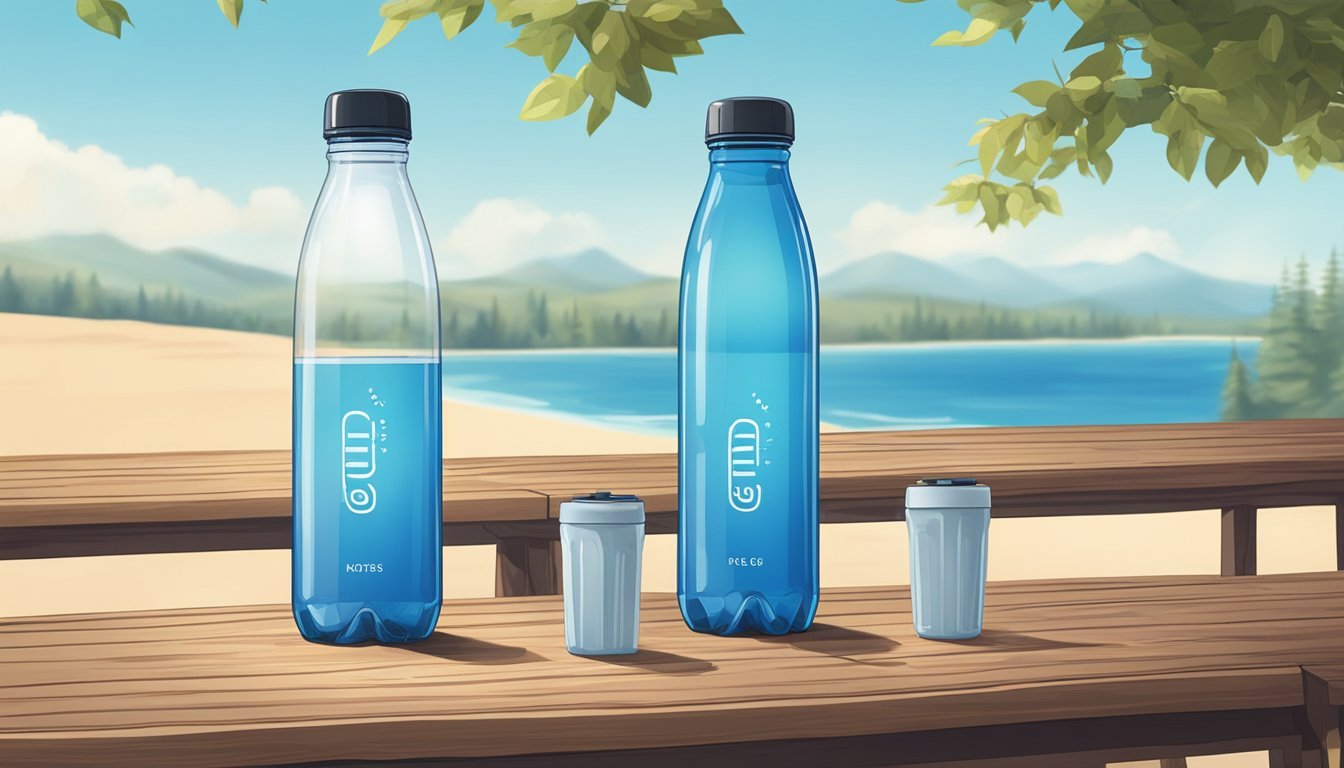Cirro vs. The Well
Which Bottled Water is Better for You?
Choosing the best bottled water can be a daunting task, given the sheer volume of options available. Among the top contenders are Cirro and The Well, two brands that have garnered attention for their purity and taste. Cirro is celebrated for its crisp, clean flavor and reliable purity. On the other hand, The Well promises a unique mineral composition that many believe enhances its taste and health benefits.
Cirro’s water is sourced from protected springs, ensuring a consistent quality that appeals to those who prefer a neutral taste. This makes it a favorite for daily consumption and hydration. The Well sets itself apart with its naturally high mineral content including calcium and magnesium, which are said to support overall wellbeing.
Environmental considerations also play a significant role in choosing a bottled water brand. Cirro prides itself on using recyclable materials for its bottles, while The Well has committed to reducing its carbon footprint through sustainable practices. These factors might tip the scale for consumers looking to make an eco-friendly choice, making the comparison between Cirro and The Well not just about taste and health benefits, but also about environmental impact.
Understanding Bottled Water
Bottled water is a convenient choice for many, providing a portable hydration solution that comes in different types. It's regulated to ensure safety and offers certain benefits but also poses notable environmental challenges.
Defining Bottled Water Types
Bottled water comes in various forms, each differentiated by its source and treatment process. Spring water originates from underground formations and must be collected at the spring or through a borehole tapping the underground formation. Mineral water contains at least 250 parts per million total dissolved solids of minerals from its source. Purified water undergoes processes like distillation, deionization, or reverse osmosis to remove impurities. Knowing the type of bottled water is essential as it can affect both taste and health benefits.
Regulations and Safety
The safety and quality of bottled water in the United States are regulated primarily by the FDA, while tap water quality is overseen by the EPA under the Safe Drinking Water Act. Bottled water must meet the same safety standards as tap water, though the two are subject to different regulations. Bottled water plants must test for contaminants like lead, bacteria, and other harmful substances. Regular testing and adherence to sanitary practices ensure that bottled water remains safe for consumption. However, the level of scrutiny and frequency of tests can vary, influencing perceptions about its safety.
Benefits of Bottled Water
Bottled water offers notable benefits, primarily convenience and portability. It serves as a readily accessible hydration option, especially when on the go. Some bottled water options are enriched with electrolytes or minerals, which can be beneficial post-exercise or during sickness. It's often seen as a healthier alternative to sugary drinks and can be a reliable option in areas where tap water quality is questionable. The availability of different sizes and types also allows for personal preferences, enhancing the overall hydration experience.
Environmental Impact
The environmental impact of bottled water is significant due to the production and disposal of plastic water bottles. The manufacturing process involves the use of fossil fuels, and transportation adds to the carbon footprint. Many plastic bottles end up in landfills or oceans, posing a threat to wildlife. Efforts to use recycled materials or environmentally friendly alternatives like glass bottles can mitigate this impact, though they are not yet widespread. Consumers are increasingly called to recycle and support sustainable practices to lessen the environmental burden.
Analysis of Cirro Water
Cirro Water, known for its high magnesium content and natural alkaline properties, offers unique health benefits and originates from a pristine spring in a mountainous region. Examining its source, filtration methods, taste, mineral benefits, and packaging provides a comprehensive understanding of its qualities.
Source and Origin
Cirro Water is sourced from Adobe Springs, renowned for its exceptional purity and high magnesium levels. Adobe Springs flows at a rate of 75,000,000 gallons per year and is located 1,375 feet above sea level. The area is free from industrial development, ensuring the water remains naturally uncontaminated.
The naturally occurring alkaline nature of the spring enhances the water’s quality. Additionally, the springs’ location in a mountainous region further contributes to the water's pristine condition.
Filtration and Purity
Cirro Water undergoes minimal filtration to preserve its natural mineral content. Unlike purified water, which often goes through extensive processes like reverse osmosis, Cirro Water maintains much of its original mineral composition.
Its process focuses on removing potential contaminants without stripping away essential minerals, providing a more natural and mineral-rich product. This gentle filtration method ensures that consumers can enjoy the water’s health benefits without unnecessary additives.
Taste Profile
The taste of Cirro Water is characterized by its smooth and refreshing profile, attributed to its natural mineral content. The presence of magnesium and calcium adds a slight complexity to the taste, distinguishing it from other bottled waters that might lack such minerals.
Users often describe it as crisp and clean, with a subtle alkaline note that enhances the drinking experience. This makes Cirro Water not only a healthy option but also a pleasant one to consume daily.
Health and Mineral Benefits
Cirro Water stands out for its high magnesium content, with 110 mg/L compared to the much lower levels found in most American bottled spring waters. This high magnesium content supports bone health, nerve function, and muscle performance.
In addition to magnesium, Cirro Water contains other beneficial minerals like calcium and electrolytes, aiding in overall hydration and providing essential nutrients. The natural alkaline property of the water also helps maintain a balanced pH level in the body, promoting digestive health.
Packaging and Sustainability
Cirro Water prioritizes sustainability in its packaging choices. The brand uses environmentally friendly packaging options, striving to reduce plastic waste and promote recycling.
Their bottles are made from recyclable materials, with a focus on minimizing environmental impact. By choosing sustainable practices, Cirro Water not only provides health benefits to its consumers but also contributes positively to environmental conservation efforts.
Analysis of The Well Water
The Well water is sourced from reputed natural springs, known for their excellent taste and mineral content. This section will delve into various aspects such as its natural origin, mineral richness, flavor profile, health benefits, and environmental efforts.
Natural Spring Source
The Well water is derived from natural springs, which are locations where groundwater surfaces naturally. Springs in places like New Hampshire are renowned for their pristine quality and excellent taste. This natural sourcing ensures that the water remains pure and minimally processed, providing a natural hydration option. The use of natural springs as a water source aligns with sustainable practices and preserves the water's inherent qualities.
Mineral Content and Quality
The Well water is rich in minerals such as calcium, magnesium, and potassium. These minerals are naturally dissolved as the water travels through underground aquifers. The specific mineral composition of The Well water contributes to its taste and potential health benefits. For example, the presence of calcium and magnesium supports bone health and muscle function. Testing and quality control measures ensure that the water is free from harmful contaminants like lead and iron.
Mineral Concentration (mg/L) Calcium 20 Magnesium 15 Potassium 5 Sodium 10
Flavor and Water Sommelier Insights
The Well water is frequently praised for its crisp and refreshing taste. Water sommeliers, experts in water flavor profiles, often describe it as having a clean and balanced flavor with a slight mineral aftertaste. The taste is influenced by the mineral content, and many find it more appealing compared to your typical tap water or even certain bottled waters like Aquafina. This makes The Well water a popular choice among consumers who value taste as much as purity.
Health Considerations
Drinking The Well water provides vital hydration and supports overall health. The presence of essential minerals like calcium and magnesium can aid in maintaining healthy liver and kidney function. Notably, The Well water does not contain excessive amounts of potentially harmful substances like iron or lead. It can be a good choice for those looking to avoid the health risks associated with some untreated well water sources.
Environmental Commitment
The Well emphasizes its commitment to environmental sustainability. Using sources like natural springs ensures lower environmental impact compared to some bottled water brands that heavily process their water. The company adopts environmentally friendly practices in their bottling processes and materials to reduce their carbon footprint. By prioritizing sustainable sourcing and production, The Well contributes positively to the larger goal of environmental conservation.
Comparing Cost and Value
Comparing the cost and value of bottled water brands like Cirro and The Well reveals significant differences in price and perceived value. These differences affect consumer choice, factoring in both monetary cost and added benefits.
Price Points Analysis
Cirro and The Well offer distinct price points in the bottled water market. For instance, Cirro might be priced at around $1.50 per bottle, falling into the mid-range pricing category. Alternatively, The Well could be available at $2.00 per bottle, positioning it as a premium option.
Comparing these costs to alternatives like tap water clarifies their differences. Tap water tends to cost roughly $0.005 per gallon in the U.S., making bottled water significantly more expensive. Consumers might choose tap water combined with home filtration systems as an economical choice, though this option lacks the convenience of pre-bottled products.
Value for Money
Value for money involves more than just the price tag. Cirro's customers might appreciate its affordability, but they also consider taste and reliability, rating it high for consistent quality without any plastic aftertaste. Cirro’s price point makes it attractive for budget-conscious consumers who don't want to compromise on taste.
The Well, although more expensive, offers potential benefits that justify its higher cost. These include eco-friendly packaging, enhanced mineral content, and rigorous filtration processes. People willing to spend more might value these features, associating higher cost with better purity and health benefits.
Both choices reflect a trade-off between cost savings and added value, influencing consumer preferences based on differing needs and priorities.
Buyer’s Guide to Bottled Water
When choosing bottled water, it's essential to consider factors like water quality, mineral content, and environmental impact. Making informed choices ensures you select a product beneficial to both health and the planet.
Choosing the Right Water for You
First, understand the types of bottled water available. Mineral water contains naturally occurring minerals and tends to have a balanced pH and distinctive taste. Purified water, often sourced from tap water, undergoes filtration processes like reverse osmosis to remove impurities. Taste can vary widely based on mineral content and pH balance, so sampling different brands may help identify personal preferences. Checking labels for mineral composition informs decisions about nutrient intake from water.
Sustainable Practices in Water Consumption
Sustainable water consumption starts with selecting eco-friendly bottled water options. Opt for brands that use recycled materials in their packaging. Consider the long-term environmental impact of single-use plastics. Using a reusable water bottle drastically reduces plastic waste. Some companies prioritize sustainable practices, such as carbon-neutral shipping and minimal plastic use, which can be a critical consideration for eco-conscious consumers. Balancing convenience with environmental responsibility fosters a healthier relationship with bottled water consumption.
Environmental and Health Considerations
When comparing Cirro and The Well bottled water, plastic pollution and health risks associated with different contaminants should be examined closely.
Impact of Plastic on the Environment
Plastic pollution is a significant concern with bottled water. PET (polyethylene terephthalate) plastic, commonly used in water bottles, does not break down easily and can persist in the environment for hundreds of years. The production and disposal of these bottles contribute to environmental issues such as landfill waste and ocean contamination. Furthermore, the transportation of bottled water results in additional greenhouse gas emissions. A shift toward more sustainable practices and reusable containers is essential for reducing these environmental impacts.
Effects of Contaminants in Drinking Water
Contaminated drinking water poses potential health effects. Studies reveal that bottled water may contain PFAS (per- and polyfluoroalkyl substances), chemicals linked to health risks such as immune system suppression and cancer. Bottled water is often perceived as safer than municipal water, but this is not always the case. Regular testing of both bottled and municipal water supplies is crucial to ensure safety. Consumers should also be aware of the origins and treatment processes of their drinking water to avoid contaminants and ensure optimal health.
Advancements in Water Filtration Technology
Recent advancements in water filtration technology have significantly improved both the efficiency and effectiveness of removing contaminants. Key innovations target a diverse range of pollutants, ensuring safer drinking water.
Innovations in Filtration Systems
The introduction of reverse osmosis (RO) technology has been a game-changer. RO forces water through a semi-permeable membrane, removing dissolved salts, bacteria, and viruses. This method is effective in homes, industry, and water treatment plants.
Carbon nanotube (CNT) filtration is another cutting-edge development. CNT-based systems excel in eliminating organic, inorganic, and biological compounds. Major corporations like DowDuPont and Koch Membrane Systems are leading the charge, aiming to reduce microplastics in water.
Pitcher filters have also seen improvements. These now often include multi-stage filtration, combining activated carbon and ion-exchange resins which enhance water quality and remove chlorine and heavy metals.
Importance of Regular Water Testing
Regular water testing is crucial for maintaining high water quality. Testing identifies contaminants like lead, nitrates, and bacteria that could pose health risks.
Water purifiers now often come with integrated testing kits. Users can easily monitor water quality, ensuring their filtration systems are functioning correctly. Water treatment plants also employ rigorous testing protocols, ensuring the public receives safe drinking water.
Homeowners can use specialized kits to test their water. This is particularly important in areas with older plumbing where contaminants might infiltrate. Testing periodically helps identify issues early, allowing for timely intervention and mitigation.
Tables summarizing contaminants and their effects are available through various health agencies, which can guide individuals in understanding their water quality levels.







